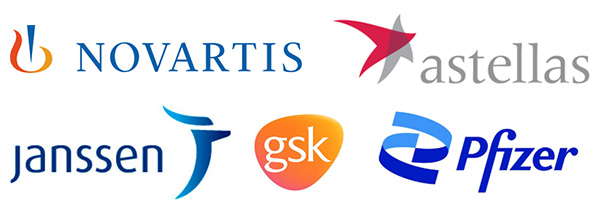Here at Content Formula, we have a long and successful track record of working with pharmaceutical companies, helping them implement excellent intranets. Were proud that our clients have included Janssen, Pfizer, Astellas, Novartis and GSK.

The pharmaceutical sector has never been more important than it is today, and the incredible work being carried out to develop vaccines to help prevent COVID-19 is exceptional and inspiring.
Pharmaceutical companies are knowledge-intensive organisations with specialist needs in a highly regulated sector. They are also often global companies with complex structures and highly diverse workforces. Smooth communication and strong collaboration are exceptionally important; an intranet and the wider digital workplace can play a significant role in enabling and streamlining key organisational processes.
Although every pharma company is very different, there are some common intranet features that tend to assume great importance due to the specialist needs of the industry. Of course, many intranet features such as an engaging and informative homepage are important for every large organisation, but in this article, were going to explore the intranet and digital workplace capabilities that matter especially to pharma companies.

1 Finding and connecting with Subject Matter Experts
The success of pharmaceutical companies is dependent on highly specialised experts who not only have the scientific know-how to develop medicines, but also to move it through regulatory approval and support extremely complex manufacturing, supply and distribution logistics across global markets. An intranet helps connect people to Subject Matter Experts (SMEs) and each other, allowing everybody to work in joined-up ways to ensure successful outcomes.
There are several intranet features that support connecting with SMEs, including:
- Comprehensive people directories with powerful search capabilities that allow people to locate experts by specialism, market and more
- Social Q&A facilities that allow employees to pose questions to experts
- A strong search to establish the findability of highly technical expert content and knowledge, where there is also a related expert owner to contact
- Providing a central, searchable directory of collaboration spaces, such as listing Yammer communities where experts can be located.
2 Providing access to highly technical and specialist knowledge
Pharmaceuticals is a very fast-moving industry, and an intranet can provide access to the highly technical and specialist knowledge needed across different therapeutic areas. Some of this may be external, for example, providing access to feeds from specialist journals and sources. In other cases, the knowledge might be internally generated and curated.
For example, we have recently worked with a large pharma company to develop spaces on their intranet which can be used by SMEs to curate collections of knowledge that are useful to drive current awareness and provide a highly valuable reference point for other experts to access. Here, a good intranet can make all the difference by making knowledge curation and sharing effortless, thus encouraging SMEs to be proactive in their knowledge-sharing.
Strong findability through search and good information architecture in an intranet also makes this knowledge more discoverable, while subscriptions and notification capabilities alert specialists when new items are added. Sharing knowledge supports the ability for organisations to repurpose, reuse and learn from translatable experiences and models.
3 Supporting professional Communities of Practice
A cornerstone of supporting specialist knowledge in large companies is through Communities of Practice, where experts, often from different disciplines, can come together to discuss different topics which are often very technical in nature. Communities of Practice play an important role in everything from developing expertise, to supporting knowledge transfer, to developing new ideas. They are crucial for big pharma companies.
A good intranet should support a strong Community of Practice programme. For example, companies using Yammer for Communities of Practice can integrate discussions into a SharePoint intranet with targeted feeds that provide context and discussions on documents. An intranet directory of communities can also encourage people to join different groups and initiate the joining process for new community members.
4 Promoting robust governance to support risk and compliance
Risk and compliance are always important in highly regulated markets, but even more so in pharmaceutical companies. The development, distribution and marketing of medicines is very tightly regulated, with considerable variance across different territories. Therefore, instructional and operational content that lets employees know how to get things done must be strongly controlled to make sure it is always up-to-date and accurate. Here, intranets play a vital role in providing access to such information, as well as supporting the underlying content governance processes that ensure it is up-to-date.
On a pharma intranet, it is absolutely essential that employees trust content and have complete certainty that it is up-to-date. An intranet can do this in various ways, including:
- Providing owner and last-updated information on every page that encourages accountability
- Providing a specialist central policy library facility with in-built version control
- Providing appropriate workflow and approval publishing processes to ensure SMEs review items
- Automating content reviews so that authors are forced to review content on a regular basis for accuracy
- Providing good content owner dashboards showing which content needs to be reviewed and more.
5 Facilitating personalisation and localisation for global markets
Many pharmaceutical companies have global concerns and operate across a number of markets. Here, the capabilities of global intranets that provide access to location-specific information through personalisation based on role and geography, as well as multi-language content, can assume greater importance.
For example, critical operational information around marketing medicines that must be adhered to may differ across varying markets. Strong intranet personalisation that provides access to the right content as well as different translations is key.
6 Supporting external collaboration
The complex operations of pharmaceutical companies mean there can be a strong need to collaborate externally with suppliers, regulators, and even other pharmaceutical companies. Increasingly, this is being done via Microsoft Teams, but also through specialist extranets and supplier portals.
A good intranet is always a window to the wider digital workplace, and for pharma companies may provide an opportunity to integrate feeds or provide easier access to external collaboration channels, such as through a directory on Microsoft Teams. Here, an intranet integrates external collaboration more into the daily flow of work.
Need help with your pharma intranet? Get in touch!
Were proud of our past and ongoing work with the pharmaceutical industry. If you need help with your pharma intranet, get in touch!



 SharePoint Products
SharePoint Products

